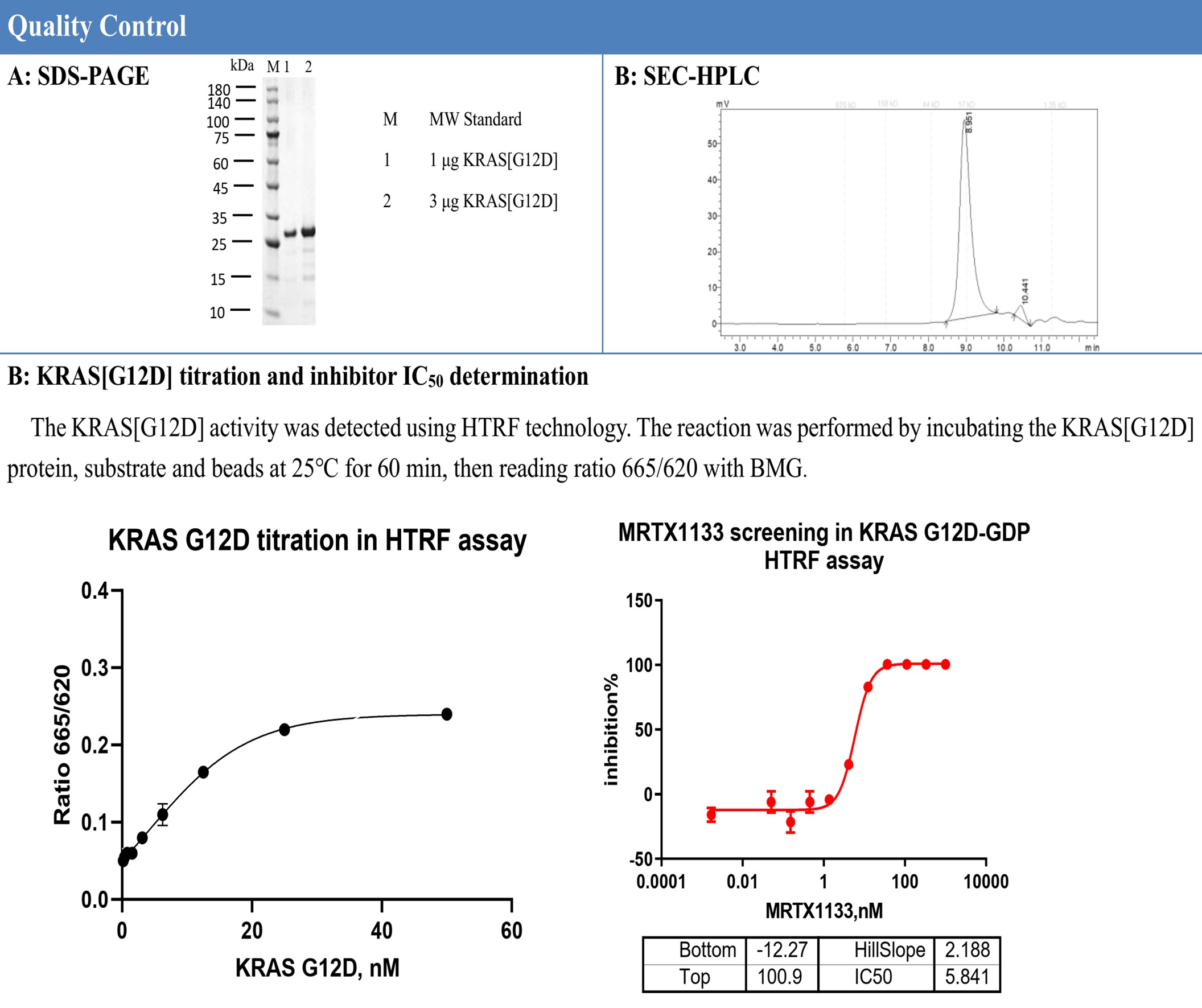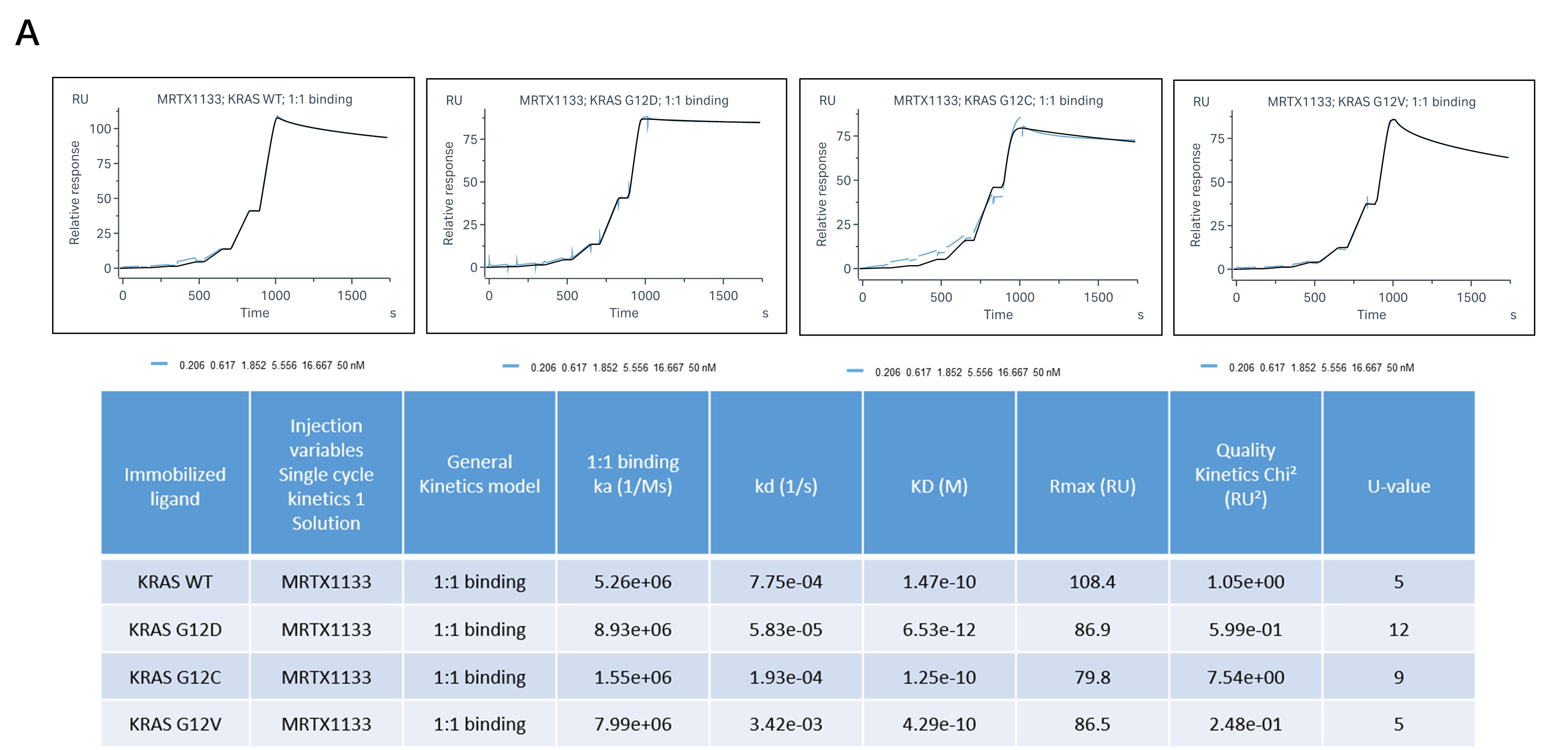Rat sarcoma (RAS) was the first human tumor gene to be discovered and is the most commonly mutated oncogene in human cancers. RAS genes are considered among the most frequently mutated genes in tumors, present in approximately 30% of human cancers, with 95% of them being KRAS mutations. KRAS mutations occur at varying proportions across various malignancies. The majority of KRAS mutations disrupt the intrinsic GTPase activity of KRAS, leading to the activation of KRAS being unable to hydrolyze GTP to GDP. These mutations result in the constant activation of Ras proteins, continuously activating downstream signaling pathways, ultimately drives uncontrolled cell proliferation, inhibits apoptosis, enhances invasiveness, and promotes angiogenesis. These oncogenic mechanisms contribute to the development and progression of various cancers, making KRAS a significant target for cancer research and therapeutic intervention.
ICE Bioscience has provided comprehensive solutions encompassing protein purification, protein-protein interaction assays, SPR KRAS WT/mutants binding assays, and cell proliferation assays. We currently possess a wide range of KRAS mutant variants (G12D/C/V/R/S, G13D/C, Q61H), along with two additional members of the RAS family, HRAS and NRAS. Our stable enzymatic, biophysical, and cellular assays are designed to facilitate drug discovery efforts and expedite the drug development process.
At ICE Bioscience, we offer a comprehensive range of recombinant proteins, including various KRAS mutant variants (G12D/C/V/R/S, G13D/C, Q61H), HRAS, NRAS, as well as upstream and downstream related proteins such as SOS1 and cRAF. Each batch of proteins undergoes rigorous activity validation to ensure purity and functionality. We also provide GDP-loaded proteins to cater to a wide range of experimental requirements.

KRAS G12D_GDP protein datasheet. (A) SDS-PAGE data. (B) SEC-HPLC data. (C) HTRF activity assay validation data.
KRAS can interact with guanine nucleotide exchange factors (GEFs) such as SOS1 and SOS2. Activated KRAS can also bind to downstream cRAF to initiate downstream signaling pathways. At ICE Bioscience, we utilize the HTRF method to assess the interaction of KRAS binding to SOS1, SOS2, and cRAF, providing insights into the inhibition of KRAS by small molecules.

(A) Principle of KRAS/RAF binding assay. (B) HTRF-based detection of compound inhibition of KRAS G12D and cRAF binding using the HTRF method. (C) HTRF-based detection of compound inhibition of KRAS G12C and SOS1 binding. (D) HTRF-based detection of MRTX1133 inhibition of KRAS G12C and SOS2 binding.
After KRAS binds to the guanine nucleotide exchange factor SOS1, GDP is released, allowing GTP to bind to KRAS, subsequently activating it. At ICE Bioscience, we employ two methods to assess the inhibition of small molecules on KRAS NEA. The first method utilizes fluorescence-labeled BODIPY-GTP, which, catalyzed by SOS1, binds to tagged KRAS. The interaction between KRAS and BODIPY-GTP is assessed using the TR-FRET method. The second method involves tagged KRAS transitioning from an inactive GDP state to an active GTP state under the influence of SOS1. Activated GTP-bound KRAS then interacts with downstream tagged cRAF. The degree of KRAS exchange is indirectly reflected by measuring the interaction between GTP-bound KRAS and cRAF using the HTRF method.

Evaluation of small molecule inhibition of nucleotide exchange activity in two types of KRAS mutants. (A) Schematic representation of the KRAS & BODIPY-GTP Nucleotide exchange TR-FRET assay principle. (B) Detection of MRTX1133 inhibition of nucleotide exchange in KRAS G12D_GDP/G12V_GDP using the KRAS & BODIPY-GTP Nucleotide exchange TR-FRET method. (C) Schematic representation of the KRAS_GDP & GTP & CRAF Nucleotide exchange HTRF assay principle. (D) Detection of MRTX1133 inhibition of nucleotide exchange in KRAS G12D_GDP/G12V_GDP using the KRAS_GDP & GTP & cRAF Nucleotide exchange HTRF method.
Surface Plasmon Resonance (SPR) is employed to quantify both the binding affinity and kinetics of the molecule. ICE Bioscience has established SPR method to evaluate the binding of small molecules to various KRAS mutant variants, covering both GDP and GTP binding states.


(A) SPR sensorgrams and fits depicting the interaction between MRTX1133 and KRAS WT, G12C, G12D, and G12V. (B) SPR sensorgrams and fits illustrating the interaction between BI-2865 and KRAS WT, G12C, G12D, and G12V, with the proteins loaded with GDP.
Ba/F3 cells are a murine pro-B cell line characterized by their unique reliance on murine interleukin-3 (mIL3) stimulation for in vitro proliferation. Tyrosine kinases are nearly absent in these cells, making them an ideal background for the establishment of stable transfectants expressing tyrosine kinase receptors. ICE Bioscience has obtained a total of 33 Ba/F3 stable transfectant cell lines related to KRAS mutations, meeting a wide range of research needs. With our proficient and specialized Ba/F3 assay development team, we offer comprehensive Ba/F3 cell line generation services, providing a one-stop solution for your specific cell line requirements. We also provide a cell panel specific to the KRAS target.

(A) TKIs screening principle in the Ba/F3 kinase cell line. (B) CTG Proliferation Assay of Ba/F3 KRAS cell lines.